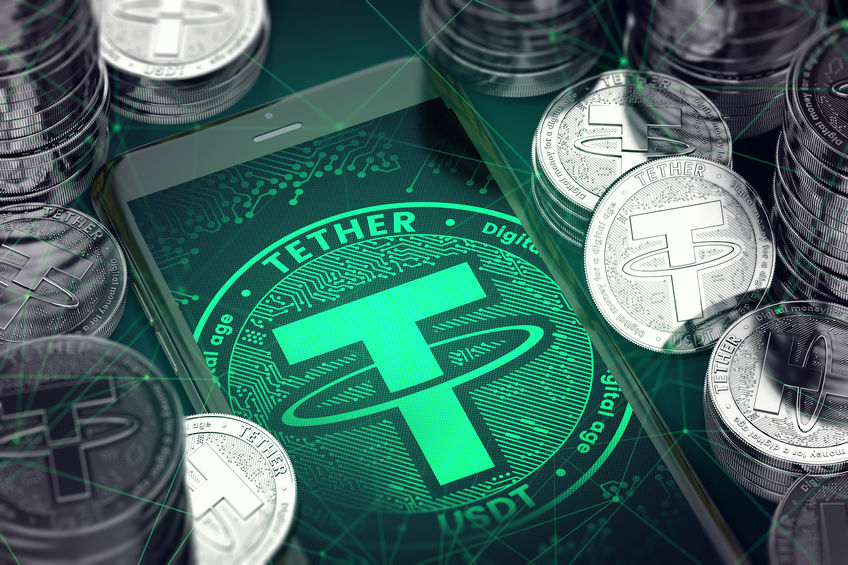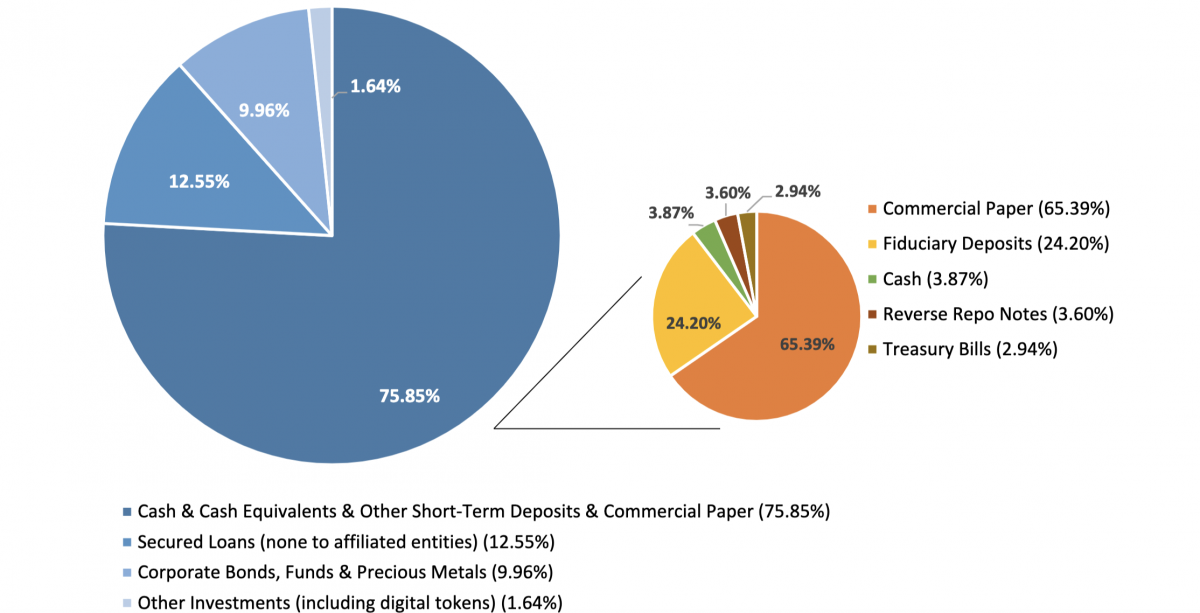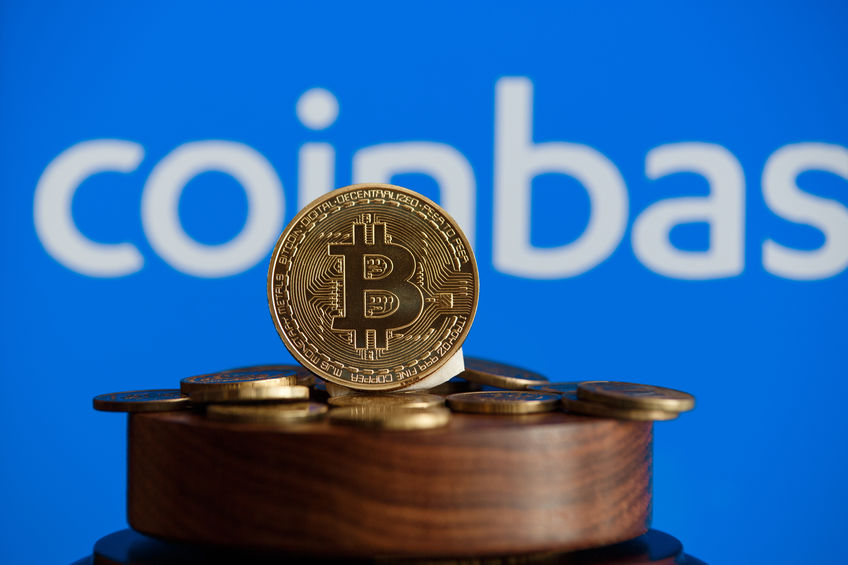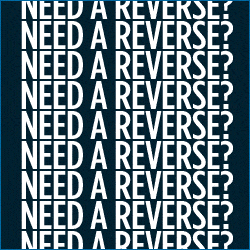cryptocurrency
Derek Jeter Joins Athletes Looking to Cash in with NFTs
September 7, 2021 The trendiest merch in tech has made its way into the world of professional sports and entertainment, as professional athletes have begun selling NFTs. DraftKings Marketplace already offers several tiers of NFTs from Tom Brady, Simone Biles, and Wayne Gretzky—some of which are valued at over $167,000. Jeter’s NFT will be dropped Tuesday afternoon in two separate bids.
The trendiest merch in tech has made its way into the world of professional sports and entertainment, as professional athletes have begun selling NFTs. DraftKings Marketplace already offers several tiers of NFTs from Tom Brady, Simone Biles, and Wayne Gretzky—some of which are valued at over $167,000. Jeter’s NFT will be dropped Tuesday afternoon in two separate bids.
“We are excited to bring this special Derek Jeter offering exclusively to our DraftKings Marketplace customers, and believe it will have a place in history as our first digital baseball collectable drop,” said Matthew Kalish, co-founder and President of DraftKings North America to deBanked. “There has been such a strong and positive response from our community around the iconic athlete drops so far, and Derek Jeter, the iconic Yankees superstar and soon-to-be Hall of Famer, will be no different. We look forward to seeing thousands of collectors add to their digital collections this week on DraftKings Marketplace.”
Alongside age requirements specific to the state in which the purchase takes place in, potential buyers must also have a verified DraftKings account with all of the terms and conditions agreed upon.
Hosted by the NFT platform Autograph, Jeter is one of the many athletes that sits on the board of the company. Co-Founded by Brady, all the athletes that have had NFTs sold through DraftKings thus far are the board of advisors for Autograph.
 With a reliance on live events, merchandise, and sponsorships with brands to engage with millions of viewers, the NFT market is an interesting platform for athletes to take the trading card to the digital space, while also opening up another avenue of revenue outside the arena.
With a reliance on live events, merchandise, and sponsorships with brands to engage with millions of viewers, the NFT market is an interesting platform for athletes to take the trading card to the digital space, while also opening up another avenue of revenue outside the arena.
“As the world becomes more comfortable with digital ownership and collection, we see an incredible opportunity to bring users high-quality and personalized content from their favorite athletes, artists and franchises,” said Dillon Rosenblatt, Founder and CEO, Autograph. “NFTs are the perfect medium to connect users to both the things they love and those who share those interests, and we want to leverage today’s incredible partnerships to provide continued value to our community.”
Autograph has also teamed up with Lionsgate to develop NFTs with their most successful films, continuing their push to develop a marketplace of purely entertainment-based NFTs.
A source at DraftKings was able to confirm that more athletes are going to be releasing NFTs on the platform within the next couple of weeks.
SEC Charges BitConnect With $2B Crypto Fraud
September 6, 2021 The SEC filed an action against BitConnect last week, accusing two of the firm’s executives for defrauding retail investors by offering a digital asset investment program — while fudging the numbers. The company is accused of cheating investors out of an estimated $2 billion.
The SEC filed an action against BitConnect last week, accusing two of the firm’s executives for defrauding retail investors by offering a digital asset investment program — while fudging the numbers. The company is accused of cheating investors out of an estimated $2 billion.
“We allege that these defendants stole billions of dollars from retail investors around the world by exploiting their interest in digital assets,” said Lara Shalov Mehraban, Associate Regional Director of SEC’s New York Regional Office. “We will aggressively pursue and hold accountable those who engage in misconduct in the digital asset space.”
Stemming from a civil case in May, Bitconnect founder Satish Kumbhani is accused of lying about his company’s profits while also violating registration laws that are put in place to protect investors. The charges also extend to Glenn Arcaro and his firm Future Money Ltd, as they’re accused of receiving fraudulent commissions from BitConnect of up to $24 million for acting as their promoter.
According to the SEC, investors were told that BitConnect used a “volatility software trading bot” that promised returns of 40% per month while also being shown false returns depicting 3,700% annualized gains. The commission called BitConnect’s actions a “textbook Ponzi scheme” where they are being accused of paying old investors with new investor money.
Arcaro appeared before a judge last Wednesday, pleading guilty to a related criminal wire fraud conspiracy charge in California. He is to be sentenced on November 15. Kumbhani, an Indian citizen, is reportedly a fugitive.
According to the SEC’s report, two of the five promoters have already settled in a related action for promoting the BitConnect offering. The commission has also obtained judgments that require promoters Michael Noble, Joshua Jeppesen, and Jeppesen’s fiancé to pay over $3.5 million and 190 bitcoin.
The complaints seek injunctive relief, disgorgement plus interest, and civil penalties.
In internet pop culture, BitConnect achieved “meme status” in 2017 when an investor went wild at a BitConnect conference, was captured on video, and was viewed half a million times on youtube. He was not personally named in the SEC complaint.
Velocity Capital Group Becomes First Funder to Offer Broker Commissions Via Crypto
August 2, 2021 Velocity Capital Group is bullish on crypto as a means of payment. Company President and CEO Jay Avigdor told deBanked that the company is officially incorporating cryptocurrency in two ways:
Velocity Capital Group is bullish on crypto as a means of payment. Company President and CEO Jay Avigdor told deBanked that the company is officially incorporating cryptocurrency in two ways:
(1) Brokers can now choose to get paid commissions in cryptocurrency instead of cash.
(2) Merchants can now choose to get funded via cryptocurrency instead of cash.
In both cases, Avigdor touted the speed in which cryptocurrency can change hands versus waiting around for an ACH or a wire.
“Our goal since day 1 of VCG, was to give ISOs and merchants the ability to access capital as fast as possible,” Avigdor said. “With VCG’s proprietary technology, we have been able to change that mindset from ‘as fast as possible’ to ‘the FASTEST possible.'”
The company says it will use stable coins (USD Coin and DAI) to conduct these transactions “in order to limit market volatility” but that depending on the merchant or ISO relationship, they would be open to transmitting Bitcoin, Ethereum, etc.
Merchants getting funded with crypto would still have their future receivables collected via ACH so that part of the arrangement would not change. The underlying business is the same.
VCG alluded to there also being potential tax benefits of taking payment in crypto.
Avigdor believes that among industry peers, VCG is the first to offer commissions in crypto. He further explained that this is only one piece of the puzzle and that there are plans to integrate the company’s technology in a way that will allow merchants to access funding in less than 20 minutes from the time of submission to funds actually being received.
Tether is Now So Big, Its Collapse Could Disrupt the Short-Term Credit Markets
June 26, 2021 More than $62.5 billion worth of Tethers have been printed in the last few years to facilitate liquidity in the crypto markets. The system has worked because the company behind Tether had long claimed that each unit of the digital currency was backed somewhere by a real dollar in a bank account.
More than $62.5 billion worth of Tethers have been printed in the last few years to facilitate liquidity in the crypto markets. The system has worked because the company behind Tether had long claimed that each unit of the digital currency was backed somewhere by a real dollar in a bank account.
That was determined false. “Tether’s claims that its virtual currency was fully backed by U.S. dollars at all times was a lie,” wrote the New York State Attorney General in February after the regulator announced a settlement with the company. “These companies obscured the true risk investors faced and were operated by unlicensed and unregulated individuals and entities dealing in the darkest corners of the financial system.”
Despite the characterization, Tether has continued to be the glue that makes the global crypto market hum. And their size is now so big, that it’s no longer just a crypto problem.
According to the Federal Reserve Bank of Boston, Tether now poses a risk to all short-term credit markets. The central bank listed it as an example of “new disruptors” that pose financial stability challenges.
Eric S. Rosengren, the CEO of the Boston Fed, said “There are many reasons to think that stable coins, at least many of the stable coins are not actually particularly stable and actually have some of the same features as money market funds. The difference is prime money market funds have been losing market share but these stable coins have been growing very rapidly in part because of their use along with the cryptocurrency market.”
On Tether in particular, he said, “While [Tether talks] about being stable, if you look at the set of assets that are there, it includes corporate bonds, secured loans, commercial paper, in effect this is a very risky prime fund. Prime funds would not be able to hold all these assets.”
Tether has drawn enhanced public scrutiny in recent months after releasing the following breakdown of its assets. The digital asset company that once claimed all Tethers were backed by dollars, revealed that less than 3% of them were actually backed by dollars.

Tether’s riskiness was also the subject of a recent segment on Jim Cramer’s Mad Money show on CNBC:
deBanked first shed light on the Tether mystery more than two years ago in a story that questioned what drove the cryptocurrency bull market of 2017.
President of Federal Reserve Bank of Minnesota Says That Dogecoin is a Ponzi Scheme
June 20, 2021 A LinkedIn poll posted by the Chief Legal Officer of Coinbase that asked followers to weigh in on the pronunciation of Dogecoin, drew an unexpected response.
A LinkedIn poll posted by the Chief Legal Officer of Coinbase that asked followers to weigh in on the pronunciation of Dogecoin, drew an unexpected response.
Neel Kashkari, the president of the Federal Reserve Bank of Minnesota, replied that it was pronounced “pon-zi.”
Kashkari, who spent 3 years at the US Treasury where he established and led the Office of Financial Stability, has been a vocal critic of cryptocurrency. In May, he reiterated that the crypto space was a “burning garbage dump of fraud.”
This was said as part of a series of tweets that claimed Bitcoin was “utterly useless as a currency” and sarcastically dared the cryptofaithful to tell him how many people were actually using Bitcoin to buy Teslas vs. fiat.
Thanks. A few years ago I publicly declared the crypto space a burning garbage dump of fraud. Didn’t realize it was this blatant.
— Neel Kashkari (@neelkashkari) May 23, 2021
Coinbase Generated $800M Profit in a Single Quarter
April 7, 2021 The emerging powerhouse in the fintech industry isn’t a lending or payments company, it’s a cryptocurrency exchange. One can express as much skepticism as they want about Coinbase, but the company, which goes public on the Nasdaq next week, generated nearly $800 million in profit in Q1 of 2021 alone.
The emerging powerhouse in the fintech industry isn’t a lending or payments company, it’s a cryptocurrency exchange. One can express as much skepticism as they want about Coinbase, but the company, which goes public on the Nasdaq next week, generated nearly $800 million in profit in Q1 of 2021 alone.
Coinbase has 56 million verified users and holds $223 billion in assets, equal to about 11.3% of the entire crypto market.
The company says it is “building the cryptoeconomy, a more fair, accessible, efficient, and transparent financial system enabled by crypto.”
The company launched in 2012. Its last private market valuation was at about $90 billion.
Coinbase Files S-1 for IPO
February 25, 2021 Coinbase filed an S-1 Thursday morning, a significant step in gaining a listing on the Nasdaq. It’s like Christmas morning for the crypto-obsessed financial media, tearing into the document like wrapping paper on a new bike to pry into the private crypto-selling firm’s operations.
Coinbase filed an S-1 Thursday morning, a significant step in gaining a listing on the Nasdaq. It’s like Christmas morning for the crypto-obsessed financial media, tearing into the document like wrapping paper on a new bike to pry into the private crypto-selling firm’s operations.
For starters, Coinbase was profitable in 2020, as it should be with ATH bitcoin prices. The company posted a net income of $322 million on net revenue of $1.14 billion. There was no listing price for shares, though according to Axios, private pre IPO shares to investors went as high as $373/share.
Coinbase said it had 43 million verified users, 2.8 million of which transact monthly. There are $90.3 billion in assets on the platform and $193 billion in volume traded last year. The majority of revenue comes from Bitcoin and Ethereum trading. In an age of sudden fintech SPAC IPOs, Coinbase is launching a stand-alone public offering.
The buzz on social media is over the first completely remote company listing. Coinbase stated, “In May 2020, we became a remote-first company. Accordingly, we do not maintain a headquarters.” Though someone pointed out on Twitter, Coinbase, Inc still files taxes through a San Franciscan address.
The pandemic might not be the only reason Coinbase went remote. US-based coin Ripple was recently sued by the SEC for violations of securities laws. Accordingly, in the “risk factors” section, along with a warning about the natural volatility of cryptocurrency prices, Coinbase describes the similarly ever-changing nature of crypto regulation.
“We are subject to an extensive and highly-evolving regulatory landscape and any adverse changes to, or our failure to comply with any laws and regulations could adversely affect our brand, reputation, business, operating results, and financial condition,” Coinbase said.
Another strange thing to see in an S-1 was that the form was sent to the unknown identity of Satoshi Nakamoto, the person or group that created the currency itself. Coinbase somehow sent the S-1 to the founding Bitcoin block address at:
One of the risk factors Coinbase listed was the unforeseen result if Nakamoto was ever identified: “The identification of Satoshi Nakamoto, the pseudonymous person or persons who developed Bitcoin, or the transfer of Satoshi’s Bitcoins.”
Satoshi has never been truly identified beyond the initial launch of Bitcoin. Satoshi’s original block address has been sent 68 bitcoins since inception or more than $3.2 million at today’s valuation. Some other curiosities include the definitions page:
Flash Boys 2? Ethereum Bot Wars
February 25, 2021 A whole new group of traders is colluding to beat the market. No, not Redditors or fiber-optic wielding Wall Street “quants.” Today, in both a simpler and way more complex way money can be made using bots to outbid trades on cryptocurrency markets.
A whole new group of traders is colluding to beat the market. No, not Redditors or fiber-optic wielding Wall Street “quants.” Today, in both a simpler and way more complex way money can be made using bots to outbid trades on cryptocurrency markets.
According to research by Flashbots, in the past 30 days alone, $106.5 million of Ethereum (ETH) has been extracted “permissionlessly” from trades on the ETH blockchain. The problem has gotten progressively worse throughout 2020, where Flashbots researcher Alex Obadia started their search.
“After scraping the Ethereum blockchain starting from the first block of 2020, we’ve classified more than 1.3M MEV transactions,” Obadia wrote. “And found a total of at least $314M worth of Extracted MEV since Jan 1st, 2020.”
It’s called Miner Extracted Value (MEV) and Flashbots scoured millions of ETH transactions to find when it happened. Flashbots was created because of the vulnerabilities of decentralized crypto markets, like MEV exploits.
It’s stated that a simple version of how this extraction can be done is by a miner piggy-backing off existing trades, the bot can find a trade waiting to be completed in the blockchain memory pool, and “memsnipe,” creating an identical trade but raising the transaction price to complete it.
The flaw was first documented in a 2019 Cornell economics and crypto research paper.
“Blockchains, and specifically smart contracts, have promised to create fair and transparent trading ecosystems. Unfortunately, we show that this promise has not been met,” Cornell researchers found. “Like high-frequency traders on Wall Street, these bots exploit front-running in DEXes, paying high transaction fees and optimizing network latency to front-run, i.e., anticipate and exploit, ordinary users’ DEX trades.”
Flashbots updated the findings to claim that miners were rarely the culprits and that the term should be amended to Maximum Extracted Value.





























